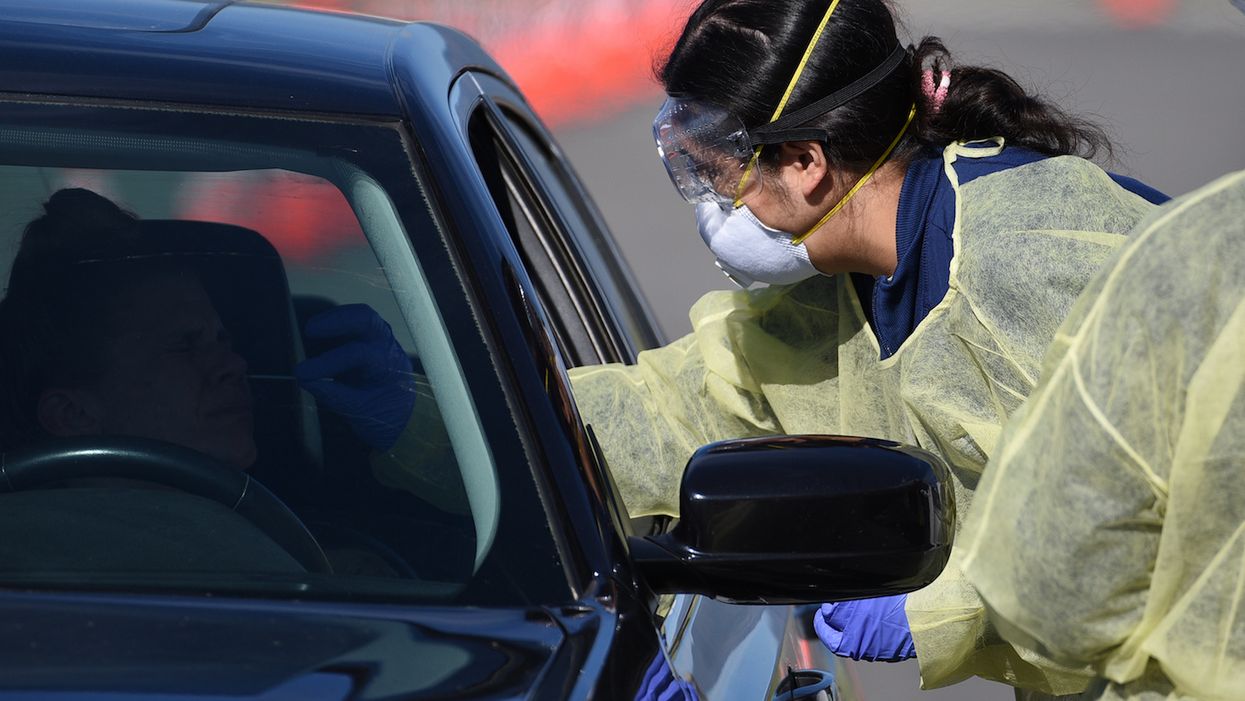
Medical personnel from Riverside University Health Systems hospitals administer a COVID-19 test to an individual in the parking lot of Diamond Stadium on March 22 in Lake Elsinore, California. (Bob Riha, Jr./Getty Images)

More testing is crucial
The widely reported statistics about the total number of COVID-19 cases worldwide likely represent only a small percentage of the actual number of cases, according to a recent German analysis.
Because the official statistics are being used to guide policy decisions in the United States and other severely effected countries, such a wide gap between lab-confirmed cases and actual cases could be problematic for determining appropriate response measures.
What the analysis revealed: The official total number of cases in the world is just under 2 million. According to University of Gottingen economist Sebastian Vollmer and research associate Christian Bommer, there could actually be tens of millions of cases worldwide that have gone undetected due to inconsistent levels of testing in different countries.
Vollmer and Bommer believe that confirmed cases are only about 6% of total infections worldwide, a conclusion reached by extrapolating from a Lancet Infections Diseases study that tracked infection rates for ex-pats returning to their home countries from Wuhan, China. That particular sample was subject to more extensive testing than most other groups. From the analysis:
"As returning Wuhan expats have been subject to extensive testing, substantial underdiagnosing is unlikely, providing confidence in these numbers," Vollmer and Bommer write. "We therefore treat the reported infection fatality rates as benchmark[s] for other countries and calculate infection fatality rates for the 40 most affected countries using UN population data to correct for differences in age distributions."
But 6% is just an average of all countries' estimated detection rate. Some countries are much higher or lower. The analysis put the U.S. detection rate at an estimated 1.6%, while South Korea was at 50%.
What the variation might mean: Governments using official data to make major policy decisions, while testing is so sporadic, should be very careful, Vollmer and Bommer wrote. From Reason:
"The average detection rate is around six percent, making the number of cases that is reported in the news on a daily basis rather meaningless," Vollmer and Bommer conclude. Vollmer adds: "These results mean that governments and policy makers need to exercise extreme caution when interpreting case numbers for planning purposes. Such extreme differences in the amount and quality of testing carried out in different countries mean that official case records are largely uninformative and do not provide helpful information." Bommer notes that "major improvements in the ability of countries to detect new infections and contain the virus are urgently needed."